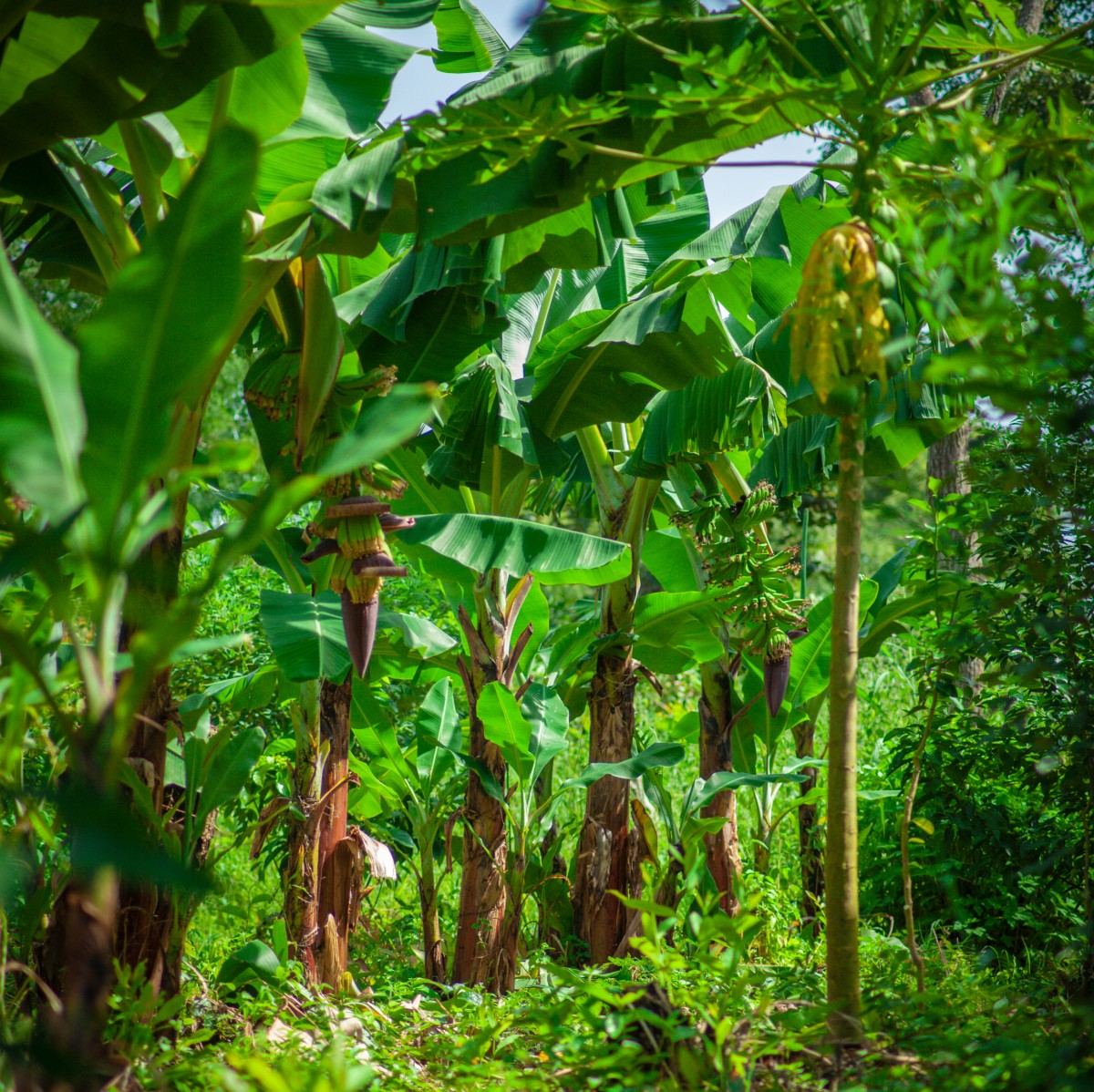Background
Food forests are complex agroforestry systems and a multifunctional tool for solving many of today’s problems. They provide healthy food, regenerate soils, increase biodiversity, regulate the water balance, cool the climate and permanently sequester carbon dioxide in the soil. Carbon sequestration through humus formation and the use of biochar are currently the only easily implementable and scalable ways to reduce carbon dioxide on a large scale worldwide.


Climate change
Storing carbon dioxide in the soil by building up humus is a simple, scalable, ready-to-implement and cost-effective measure. The potential is huge and far from exhausted. Additional storage potential is created by long-term biomass building and the use of biochar. In addition, forest gardens have a major impact on the local microclimate, cleaning the air, producing oxygen and generating rain when implemented over many or large areas!
In all our projects, we rely on solar energy instead of fossil fuels wherever possible.

Biodiversity
Around 130 species of animals and plants are currently going extinct every day! Experts are talking about the sixth mass extinction in Earth’s history, this time man-made and happening at an alarming rate. This is accompanied by the loss of sources of medicine, food and inspiration. Without the web of life and a functioning food cycle, agricultural food production will be impossible in the future. Complex agroforestry systems, on the other hand, provide habitats for a large number of creatures, especially insects and soil-dwelling organisms, thanks to the large number of different plants. Shortly after planting, the diversity of species on the land and in the surrounding area increases massively.

Soil restoration and water
The prevailing monocultural form of agriculture leads to the erosion of topsoil and the destruction of the soil’s biological balance. The Food and Agriculture Organisation of the United Nations (FAO) warns that humanity has about 50 harvests left before it is no longer possible to grow crops. Complex agroforestry systems, on the other hand, rebuild soils, improve infiltration and storage capacity for water and nutrients, purify water and prevent erosion. All of this is the basis for a healthy soil biome, which links and nourishes polycultures to produce abundant yields.

Resources and economics
Complex agroforestry systems provide a wide range of outputs: large quantities of diverse foods, firewood and timber, biochar, fibres, medicinal plants and oils. And, of course, important ecosystem services.
Compared to a monoculture, the multi-layered cultivation of perennial plants makes much more intensive use of the land. There is also no need to spend money on fertiliser, pesticides and fuel – in the medium term the systems produce what they need. They also require less external irrigation. Stable and fair prices are achieved through processing and direct marketing.

Resilience and food security
Polycultures are many times more resilient than conventional monocultures. This is due to the diversity of plants with different characteristics and the resulting high level of biodiversity. This applies not only to pests and diseases, but also to droughts, floods, landslides, fires and storms. This greatly reduces the risk of crop failure for farmers. Another economic factor is the cultivation of medicinal plants. Forest gardens are an important pillar on the road to long-term food sovereignty.

Health and nutrition
Forest gardens produce healthy and tasty food with high nutritional value, grown without artificial fertilisers and pesticides. Forest gardens clean the air and water.
Spending time in the forest has been shown to strengthen the immune system and have a positive effect on health.
We are working to solve multiple crises at once – especially in the global South, to ensure that no one is driven from their homes because they no longer have a livelihood.
Our work touches on 8 of the UN’s 17 SDGs.
1: No poverty. 2: Zero hunger. 3: Health and well-being. 4: Quality education. 11: Sustainable cities and communities. 12: Sustainable Consumption and Production. 13: Climate action. 15: Life on land.
